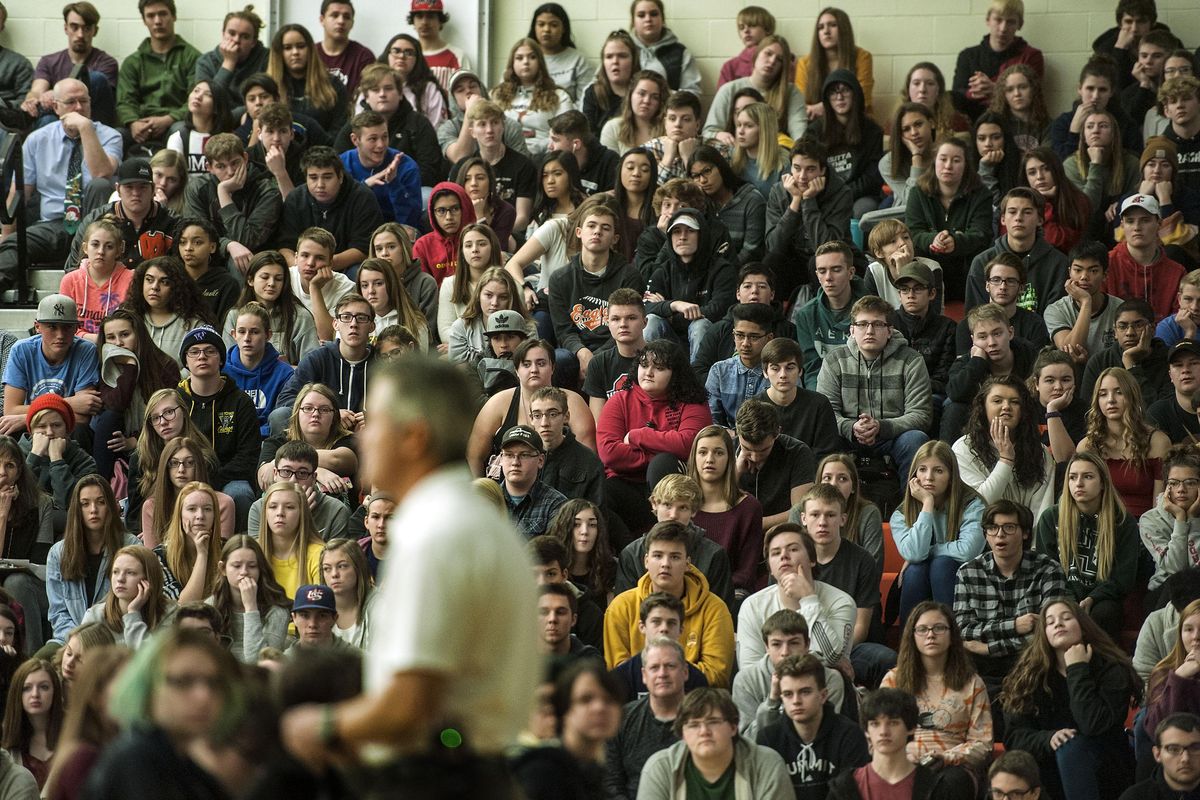West Valley students get tips from expert on surviving active shooter

The West Valley School District took the unusual step of offering active shooter training to students in its high schools and middle schools as well as their parents on Tuesday.
The district had brought in former Pierce County Sheriff’s Deputy Jesus Villahermosa of Crisis Reality Training to provide training for district staff in August, and superintendent Gene Sementi was impressed, said district spokeswoman Sue Shields.
“It was so valuable he wanted all the kids to be trained,” she said.
The district is trying to teach new strategies for students to use while trying to survive an active shooter situation, she said. “They’re the ones that are going to be affected,” she said. “They’re the ones who need the knowledge. It’s their lives on the line.”
Villahermosa, who has more than 30 years experience as a Marine, a deputy and a member of his department’s SWAT team, didn’t pull any punches in his “Surviving the Lethal Threat” presentation.
He asked how many students had considered what to do in an active shooter situation, and nearly all of the thousand high school students in the West Valley High School gym raised their hands.
Students can survive if they are in a locked room, Villahermosa said. “Lockdown is the number one lifesaving tactic,” he said. “No shooter to date, not one, has breached a locked door. It’s critical that you understand that.”
Students should cover any windows, including windows in or near the door, and crouch along the walls near the door. If a shooter does somehow break in the students will be close enough to either run out the door or fight back, he said. It’s important that students not huddle in a group in a corner far from the door because it just provides the shooter easy targets, he said.
A teacher’s desk is big and can be used to barricade the door or break out a window. Chairs can be used as weapons, as can chemicals from a lab or a janitor’s closet.
“What can you do to that bad guy?” he said. “Anything you want.”
If students are trapped in a classroom or hiding, it is imperative to remain absolutely silent and turn off cellphone ringers. “This is the most important piece right here,” he said. “This is your life.”
A gunman will not stop to search, he said. If a room appears to be empty, he will move on. He will be attracted by sound and movement.
“They’re in a hurry,” he said. “They’re constantly on the move. They’re looking for the easiest targets. Be what we call a hard target.”
He told students that if they can see or hear the shooter they should run as far and as fast as they can. They shouldn’t think they have to gather at a rallying point like the football field. Just run.
People used to be taught to duck and cover, but that’s a bad idea, Villahermosa said. People who do that near the shooter have the highest mortality rate, he said.
Students and teachers should not wait until something bad happens to figure out what they are going to do. “Your plan has to be implemented beforehand,” he said.
Villahermosa shared a personal story about his son, who always used to ask him endless questions about what he should do in certain situations. One day his son asked what he should do if there was an active shooter at his school. Villahermosa told him to run.
Two months later, Villahermosa was on patrol when he heard a radio call about an active shooter at his son’s high school. As he sped down the road with his lights and sirens on, Villahermosa chanced a call to his son because he knew his son always kept his phone on vibrate.
His son answered, panting hard. “I’m running, Dad, I’m running,” he said.
Villahermosa implored the students to tell someone if they saw someone with a gun at school or heard about plans to target the school.
“I don’t care if you leave us a note,” he said. “I don’t care if you send a carrier pigeon. We need your help. If you know someone is bringing a gun to school we need to know now.”
Villahermosa said he hoped the students would never have to use the information he was giving them.
“At the end of the day, we just want you to live,” he said.